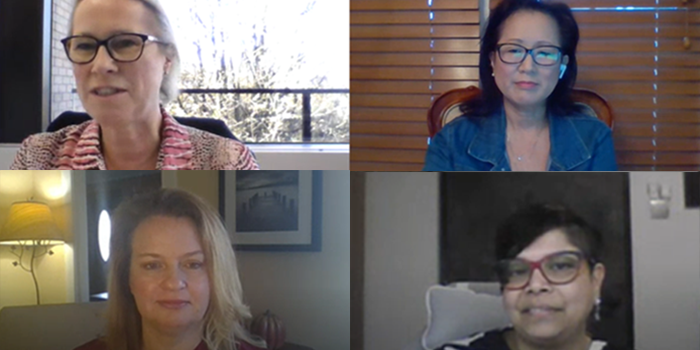
Weichert recently held our Global Supplier Summit, bringing colleagues and suppliers together from across the world to virtually discuss current talent mobility trends and challenges. During this Summit, I moderated a session on “The Changing Face of Mobility Assignments” with three of Weichert’s regional leaders: Shân Norman, Vice President, EMEA; Ann Stafford, Vice President, Canada; and Helen Pereira, Client Service Director, Asia Pacific.
In this post, I’ll share their reflections and perspectives on the current state of mobility in their regions.
As borders reopen, do you expect mobility activity to rebound?
All agreed that after a year of fewer corporate moves, primarily executives and VIPs, they are seeing employees at all levels being authorized for mobility and in some cases, opting for short-term assignments over business travel. In a number of locations, activity is at the same level as early 2019. It remains to be seen whether volumes return to pre-Covid levels, however, it’s evident that leaders are viewing the future with optimism and will rely on their mobility programs to get talent where it’s needed.
What are the most prominent challenges facing corporate clients?
The panel agreed that challenges continue to emerge as companies navigate changes to work arrangements. Ann indicated that changes to immigration and delays pose difficulties for employees who travel back and forth between countries, in addition to the hassle and additional cost of quarantine and Covid restrictions. Shân added that in EMEA, every relocation is more complicated than it has ever been due to supply chain shortages, Covid, and Brexit: “We need to rely on our supply chain more than ever, including DSPs, Immigration partners and Serviced Accommodations, to address hurdles that didn’t exist before.”
How will hybrid work and remote work impact mobility?
Companies understand the need to accommodate new work arrangements to retain talent and they’re exploring separate hybrid or remote work policies to formalize practices. Ann noted an increase in employee-requested moves driven by remote work: “I have seen this across all industries and in order to retain this talent, companies may support employees, typically on a limited basis with few mobility benefits.”
Helen added that the rise of remote work has left employees concerned with taxation and that she has been working with clients to provide more assistance in this area. She cited examples of companies that are using this feedback to enhance their existing programs and entice employees who may be reluctant to relocate.
Which employee values are influencing mobility programs?
Corporate Social Responsibility (CSR) and sustainability became priorities over the last year and companies are looking to their supply chain partners, such as temporary accommodations and household goods providers, to follow environmentally-friendly practices. Moving forward, more companies will make decisions — including choice of supplier — based on proven, measurable practices that align with those values. Shân noted that this speaks to the caliber of Weichert’s supply chain partners as they continue to bring innovative ideas that align with these goals, such as discard and donate programs.
Are companies making program changes that could impact suppliers and the way they provide assistance?
Flexibility is the top change to programs and range widely based on their needs. Shân observed an increase in core-flex approaches, in which the employer provides a set of standard benefits along with flexible provisions that the employee can choose from, based on what’s important to their family. Helen commented that even though flexible programs are typically implemented to contain costs, “these programs shouldn’t be dollar driven; it’s about the employee experience.” When more choice is placed in the hands of employees, they need knowledgeable and effective supply chain partners to understand the impact of their decisions.
What are some current trends pertaining to program costs?
Cost continues to be a challenge in our industry; the panel acknowledged the pressure on suppliers to contain or reduce expenses while overall costs continue to climb. Ann emphasized the need to change the conversation about cost to a conversation about value and the employee experience: “There are costs that are often avoided as a result of the quality of service that our supply chain brings. This translates to dollars and cents saved, but not always on paper.” Helen agreed: “In my region, greater importance is placed on how the employee feels, not how much their move cost.”
Shân noted an increase in companies that drive greater cost transparency with an open book policy, a practice that Weichert endorses. She commented, “Close collaboration is required, however, when a corporation in a products-driven industry applies the same principle to services with intangible benefits.” Later, she added: “Education and communication are critical to helping companies understand what is happening in the market that impacts costs.”
The panel concluded with Bill Wilson, SVP of Global Supply Chain, and Mary DeVeau, Global Supply Chain Director, expressing gratitude to our supply chain for maintaining their highest standards in challenging times. As Ann aptly added, “I love our supply chain and I want to provide the same great service back!”